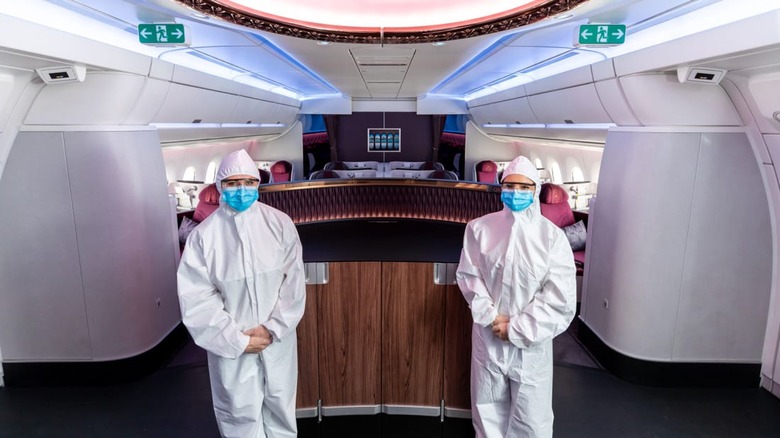The Coronavirus Pandemic Might Make Flying Safer Than Ever
- Travel safety during the novel coronavirus pandemic is a massive issue, especially for flying, which plane makers, airlines, and health officials are looking to address.
- Airbus, Boeing, and carriers are looking at new ways to reduce the risk of COVID-19 transmission aboard their planes and increase the safety of passengers.
- While the new measures could make flying safer than ever, it might not be enough to eliminate the risk of transmission.
The novel coronavirus has crippled the world's economy in a way not seen since the Great Depression. Plans are underway to start the recovery. There's talk of new stimulus checks in the US, Europe is funding its own "Marshal Plan" for the EU region, and China is bracing for the worst-case scenario. The main problem with any plans to kickstart the economy is that the virus hasn't gone anywhere. Experts caution that a second wave may be imminent. This could hinder plans to reopen, as some people might not be ready to "go back to normal." That includes the ability or willingness to travel, and of all the modes of transportation, it's flying that will worry people the most.
The good news is that Airbus and Boeing are already looking at ways to increase the safety of passengers and crew who board their planes. And airlines are making all sorts of new rules that should further improve safety and reduce transmission risks. In the end, the novel coronavirus might make flying safer than it ever has been in the past. But, ultimately, that might not be enough to keep passengers safe from the virus.
Airbus and Boeing are researching new ways to reduce the risk of COVID-19 spreading inside the cabin, The Wall Street Journal reports, and reassure passengers that they aren't at risk of being infected in flight.
Boeing is developing computer models that simulate the cabin environment, the report notes, so that officials can devise new protocols to reduce risk. Airbus is working with universities in the US and other countries to limit the spread. The company is looking at disinfectant that can last for five days and touchless devices in lavatories, among other things.
The FAA has also been working with Airbus, Boeing, and the CDC to understand the risks for fliers and how to mitigate them. The report notes that the FAA has sponsored research on how to measure and reduce the introduction of fuel and oil vapors in the cabin for years, but that doesn't apply to pathogens like the virus.
Airline officials have attempted to reassure travelers that the air inside the cabin flows in such a way that the spread of the virus is limited. That's thanks to advanced HEPA filters that can stop most particles from circulating the air and the fact that fresh air is continuously inserted in the airflow. Some airlines, like Qatar Airways, are deploying full hazmat suits for the crew.
Companies are also mandating users to wear face masks during flights, and travelers may have put on a mask before boarding the plane as well. Even so, airlines can't force people to keep masks on in flight. Disinfectant or wipes may also be provided onboard, and airlines have stepped up cleaning efforts between flights for bathrooms, tray tables, and seats. Boeing is looking at using ultraviolet light to disinfect the plane between flights, and antimicrobial coatings for frequently touched surfaces.
Even if proven successful, all these new initiatives will take time to deploy inside existing fleets. On the other hand, once they're employed, these programs could make flying healthier than ever, as they would protect not only against COVID-19, but other contagious diseases as well. Airlines have also looked at new boarding and deplaning procedures to minimize contact, and some are willing to leave seats empty and cap the number of passengers on flights.
But studies have shown that an infectious disease that spreads mainly from person to person via droplets ejected during speech, coughs, and sneezes can travel with ease inside a confined space. A study showed that SARS could have spread inside an airplane. Others showed how coronavirus patients passed the disease to others in restaurants and during choir practice, despite spending just a few hours together.
The Journal notes that there's no data showing transmission between airplane passengers has caused a major outbreak, although there is anecdotal evidence to show that travelers may have spread COVID-19 to crew members, or that pilots infected other pilots before or during flights. But the risk is still there.
"It's never going to be perfect no matter what we do," Southwest Chief Executive Gary Kelly told the paper. "But I think for the circumstances, it's very well done."
